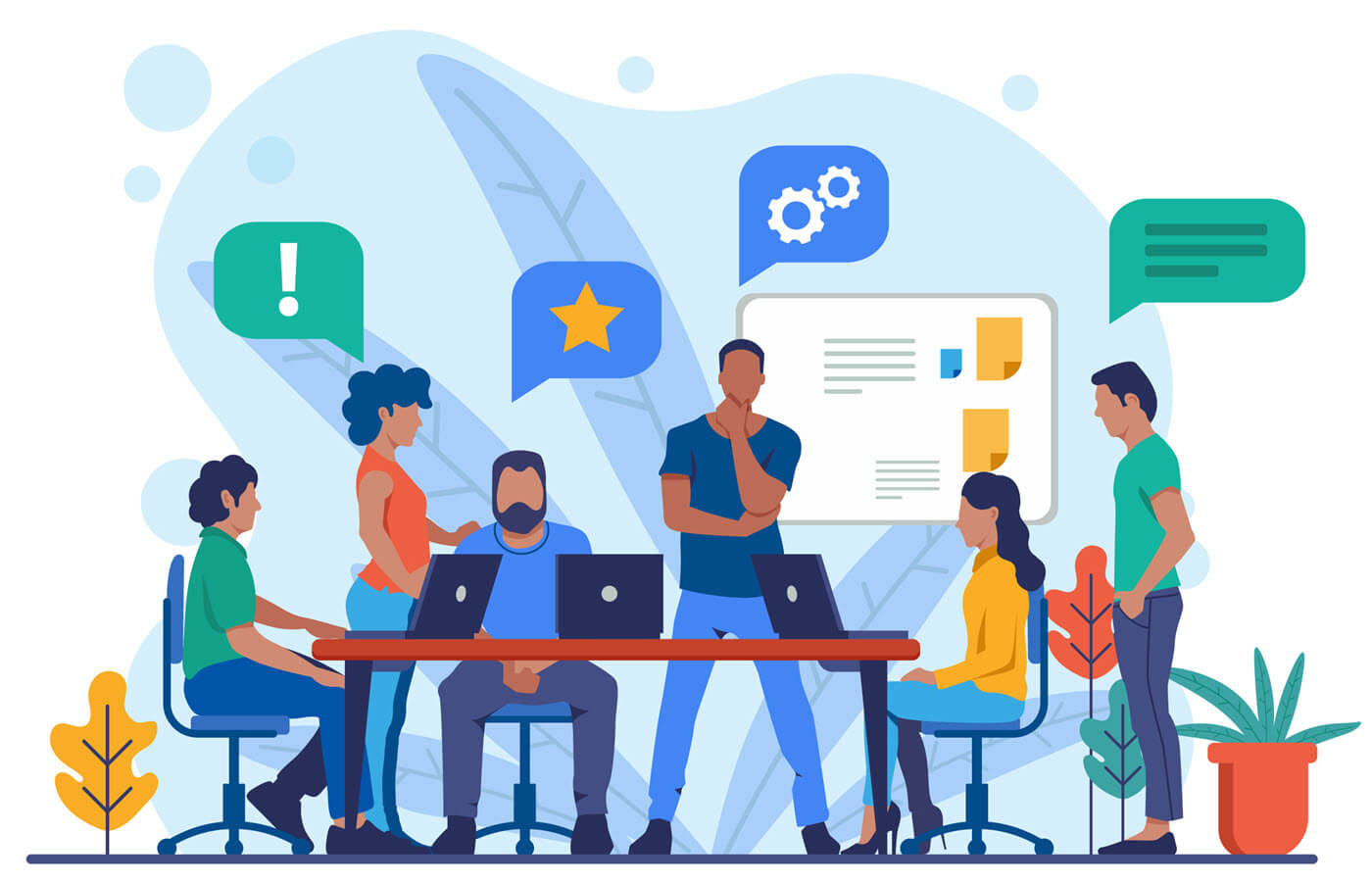6 Impacts of Employee Monitoring Software (and How to Prepare for Them)
Employee monitoring software is a powerful tool that a business of any size should implement into its workforce. While it is a surefire way to increase employee productivity and protect against insider threats, it has potential impacts and could disrupt your company workflow.
If you are implementing employee monitoring software, then you should be mindful of such impacts. Here are six possible impacts to consider and how you should prepare for them:

1. Boosted Employee Productivity
When deployed to each computer, employee monitoring software can track the amount of time a project takes, the applications used, and websites visited. If your employees were slacking off and visiting Facebook, then the helpful alerts from a monitoring software like SoftActivity will pull them back to what’s important.
Most monitoring software requires that employees manually notify the software as to which project they are working on. Otherwise, the software automatically tracks the applications that your users spend time on. It might also take screenshots of the user’s computer or record out of the webcam as another way of verifying that your employees are working.
With these safeguards in place, your employees will feel like your business’s watchful eye is overlooking more than it was before. They might feel a greater sense of urgency to complete projects and to do so honestly. Without even needing to put a monitoring policy in place, employee monitoring can boost productivity, a primary concern among businesses. However, it’s also useful to put some monitoring policies in place so that employees know that they need to be working when tracking time and so that they understand the privacy limitations of the software.
Working productivity is a huge concern in remote environments. Since your remote employee is not in the office with your managers, then it might be hard to check in on their status and also address employee morale issues. A monitoring tool will provide protected surveillance for security and productivity concerns.
2. Distrust and Suspicion in the Workplace
One of the biggest negatives to installing monitoring software in the workplace is the level of distrust that it could create. Governmental workplace laws exist so that employee monitoring, whether as part of workplace surveillance or online, is done reasonably.
Nonetheless, employees still might feel that your business is overstepping its boundaries. They might think that they are a good employee, and by having monitoring software on their work computer, the company does not trust them. This can hurt a little bit, but remember that employee monitoring is never personal.
Businesses’ handle sensitive data every single day. Whether they are processing payment for their clients or collecting demographics information, businesses’ must protect all of the data they collect. Therefore, monitoring protections must be in place. Now, naturally, a good employee knows never to do anything to that sensitive data. However, insider threats do exist, so employers must take reasonable steps to protect data against insider attacks. Other malicious actors can get into the network, which could be very dangerous to the whole company.
Now when it comes to productivity, it’s been found that most employees waste time in some way. All businesses want to do is limit the amount of wasted time to a reasonable extent. Therefore, when businesses implement employee monitoring for productivity, this is a major concern. As a business owner, educate your team to be aware of your expectations around good productivity vs. bad productivity.
3. Better Workplace Relationships
Business relationships are tricky. We see our colleagues every day and even as managers we can easily become friends with our lower-level employees. Unfortunately, managers must ensure the integrity of their business relationships, and monitoring software can help.
Without monitoring software, managers might visit their employees to ask about their weekend, when in reality, they are checking in to see if their employees are working. With an employee monitoring solution in place, though, they don’t need to lie to visit subordinates. They can instead check the performance metrics available through the software and then see how their employees are doing with no ill feelings.
Having a straightforward and clear tool, and one that provides metrics, will ease this tension. If your employees are honest, then it is natural to see that they are taking breaks throughout the day, and this will be apparent on the employee monitoring console.
Managers and employees will not need to negotiate taking breaks, working, and getting things done. Instead, the software can act as a proxy, so that workplace relationships are clearer and more efficient. Implementing a tool of this kind tends to improve employee engagement since employers can see when engagement is going down (through low productivity metrics) and managers can have genuine conversations around how employee attitudes and how they feel they are being treated in the workplace.
4. Clearer Work Expectations
Employees might be hired on to complete a job and then months later forget what it is exactly that they need to be doing every day. It’s silly, we know, but it happens all the time. While an employee might be keener on day one, they will have slacked by day 85. Therefore, you want to be sure that you are constantly reminding your employees about job expectations.
If you are just reminding them to “do their job,” this can seem like micromanaging. However, monitoring software can see if they are doing their job objectively and without needing to approach the employee.
Using productivity data, managers can discuss with the monitored employees to ask them questions about computer activity, productivity best practices, why employees are or aren’t hitting their productivity goals, and ways to improve productivity.
This also opens up bigger discussions around workplace flow and operations. If there is something that your company does operationally and it is actually creating a hiccup in the workflow, then you might be able to tease this out when you have access to employee monitoring data.
Without user activity data, you will have nothing to go off of, and your employees might not feel like their explanations have a firm grounding. With employee performance data, there are objective things to talk about, and you can each come to the conversation with these expectations cleared up.
5. Metrics for Employee Performance

As mentioned, monitoring software provides clear metrics around employee performance. This includes:
- The number of projects or tasks completed daily, weekly, or monthly
- Project and task estimates vs. reality
- Wasted time reports
- Idle time spent
- Attendance tracking
- Visited applications and websites
- Time spent on applications and websites
- And information around electronic communication, including sending emails and messages
If your software has a keystroke logger, then you can also read the messages that your employees are sending to see if they are “really” working on that project or if they are simply chatting away in Skype messenger.
These metrics provide your PM and management team insight into task completion and help the team set realistic goals. Therefore, the monitoring software will also open up the conversation around how projects are completed, allowing individuals to create realistic timelines for managing projects and providing more accurate numbers around work roles.
6. Added Protection Against Insider Threats
Individuals from within your organization, or third-party organizations connected to your organization, can accidentally or maliciously let threats into your organization’s IT system.
Unfortunately, this is just the reality of business and online companies. Because these vulnerabilities can impact your business, and your business can lose thousands of dollars due to insider threats, it is extremely valuable to have another safeguard in place so that you can try to stop an insider attack from occurring.
With employee monitoring to support this, you actually can have added peace of mind that there is another set of eyes watching your business assets. You don’t have to stay up all night monitoring your network. Instead, your monitoring software, which uses user behavioral analytics to track user behaviors, will alert your business to key red flags in your company’s online network.
Preparing for Employee Monitoring Software
As you can see, the introduction of employee monitoring comes with both positive and negative impacts. In many ways, it’s up to the business to educate its employees on the impacts of employee monitoring. Nonetheless, it will help to protect your assets against insider threats and time theft.
When it comes to monitoring work behavior, it really needs to be objective. Without objectivity and data, businesses must rely on hearsay, and this can be extremely difficult. Having employee monitoring in place can solidify your business’ legitimacy and ensure better protections over client data and workplace culture.
By SoftActivity Team